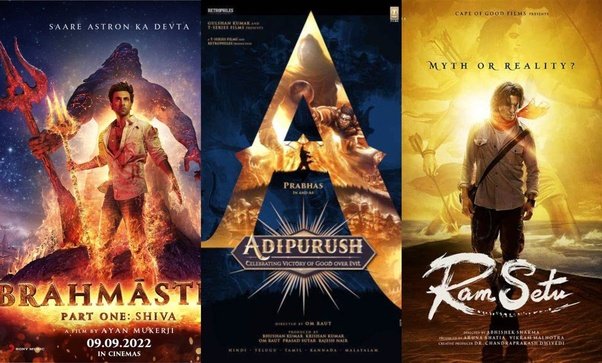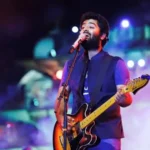The Influence of Indian Mythology in Bollywood Films
Indian mythology, with its rich tapestry of gods, demons, heroes, and epic tales, has profoundly influenced Bollywood films. These ancient stories have been reinterpreted and adapted to create movies that resonate with contemporary audiences while preserving cultural heritage. This article explores the various ways Indian mythology has shaped Bollywood, highlighting iconic films and characters that draw inspiration from these timeless narratives.
The Roots of Mythological Storytelling in Bollywood
Early Mythological Films
The early years of Indian cinema saw the production of numerous mythological films. These movies were not only popular but also instrumental in establishing the foundation of Indian filmmaking.

Iconic Early Films:
- Raja Harishchandra (1913): Directed by Dadasaheb Phalke, this is considered the first full-length Indian feature film. It tells the story of the virtuous king Harishchandra, known for his unwavering commitment to truth and duty.
- Lanka Dahan (1917): Another classic by Dadasaheb Phalke, this film depicts the burning of Lanka by Hanuman, a pivotal episode from the Ramayana.
Revival of Mythological Themes
While mythological films were popular in the early 20th century, their prominence waned over the decades. However, the themes and motifs of Indian mythology continued to influence Bollywood, finding their way into mainstream cinema in various forms.
Mythology in Modern Bollywood
Epic Adaptations and Inspirations
Baahubali Series (2015, 2017): Directed by S.S. Rajamouli, the Baahubali series, though primarily a Telugu-language film, became a pan-Indian phenomenon. The epic tale draws heavily from Indian mythological narratives, particularly the Mahabharata, with its themes of rivalry, heroism, and destiny.
Ra.One (2011): A modern sci-fi film starring Shah Rukh Khan, Ra.One is inspired by the mythological character Raavan from the Ramayana. The movie blends futuristic technology with ancient mythology, creating a unique narrative that appeals to a wide audience.
Mythological Archetypes in Characters
Heroic Protagonists: Bollywood heroes often embody traits of mythological figures like Ram and Krishna—noble, brave, and righteous. For instance, Amitabh Bachchan’s character in Sholay (1975) can be seen as a modern-day version of Arjuna from the Mahabharata, a skilled warrior fighting for justice.
Divine and Demonic Characters: Movies like Shree 420 (1955) and Amar Akbar Anthony (1977) feature characters that symbolize divine virtues and demonic vices, reminiscent of the eternal struggle between good and evil depicted in Indian mythology.
Themes and Motifs from Mythology
The Battle Between Good and Evil
The eternal battle between good and evil, a central theme in Indian mythology, is a recurring motif in Bollywood films. This theme is often portrayed through epic confrontations, moral dilemmas, and the triumph of virtue over vice.
Notable Examples:
- Lagaan (2001): The villagers’ struggle against the oppressive British rulers parallels the battle between the Pandavas and Kauravas in the Mahabharata.
- Krrish Series (2006, 2013): The superhero Krrish, much like Hanuman or Krishna, uses his extraordinary powers to fight evil and protect the innocent.
Sacrifice and Duty
The concepts of sacrifice and duty (dharma) are deeply rooted in Indian mythology and frequently explored in Bollywood films. Characters often face dilemmas that require them to make personal sacrifices for the greater good.
Notable Examples:
- Mughal-E-Azam (1960): The conflict between love and duty in this epic tale mirrors the sacrifices made by mythological characters like Karna and Bhishma.
- Mother India (1957): The protagonist’s unwavering commitment to her principles and her family reflects the ideals of duty and sacrifice found in mythological narratives.
Divine Intervention and Miracles
Divine intervention and miracles, common in mythological stories, also find their way into Bollywood films. These elements add a mystical dimension to the narratives, often resolving conflicts and delivering justice.
Notable Examples:
- PK (2014): The film explores themes of faith and divinity, with an alien protagonist questioning religious practices and highlighting the essence of true spirituality.
- Swades (2004): The protagonist’s journey of self-discovery and his mission to improve rural India is reminiscent of mythological heroes guided by divine will and purpose.
Mythology and Visual Storytelling
Grand Sets and Visual Spectacles
Bollywood films inspired by mythology often feature grand sets, elaborate costumes, and stunning visual effects, creating a sense of awe and wonder.
Notable Examples:
- Devdas (2002): The opulent sets and costumes reflect the grandeur of mythological epics, enhancing the dramatic narrative.
- Padmaavat (2018): The film’s visual splendor and larger-than-life characters draw parallels to mythological tales of valor and sacrifice.
Symbolism and Allegory
Symbolism and allegory are extensively used in Bollywood films to convey deeper meanings and connect with mythological themes. Visual metaphors and symbolic actions often enhance the narrative’s mythological undertones.
Notable Examples:
- Dil Se (1998): The use of the number seven throughout the film symbolizes the seven stages of love, akin to the mystical journeys in mythological stories.
- Black (2005): The protagonist’s struggle against blindness and her ultimate triumph can be seen as an allegory for the battle between ignorance and knowledge, a common theme in Indian mythology.
Conclusion
Indian mythology continues to be a rich source of inspiration for Bollywood, offering timeless stories, archetypes, and themes that resonate with audiences across generations. The fusion of ancient legends with contemporary storytelling creates a unique cinematic experience that celebrates India’s cultural heritage while addressing modern sensibilities. As Bollywood evolves, the influence of Indian mythology remains a testament to the enduring power of these epic tales and their relevance in today’s world.



